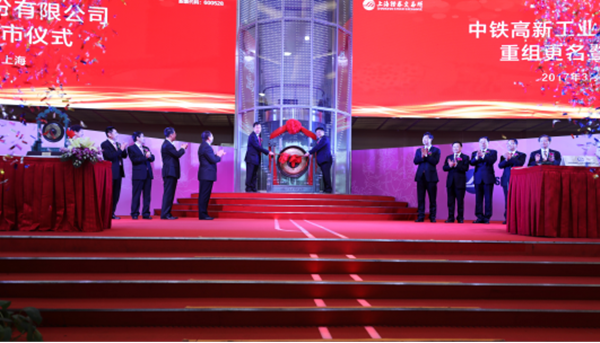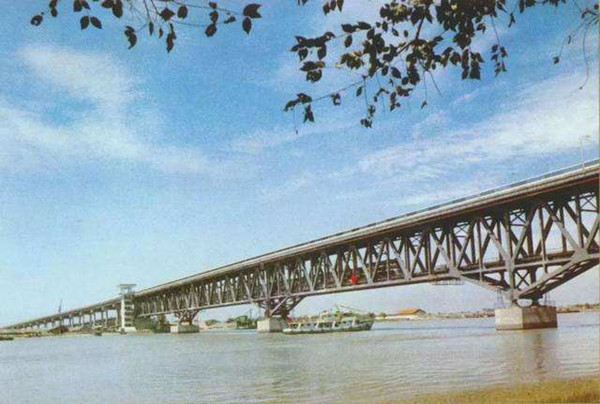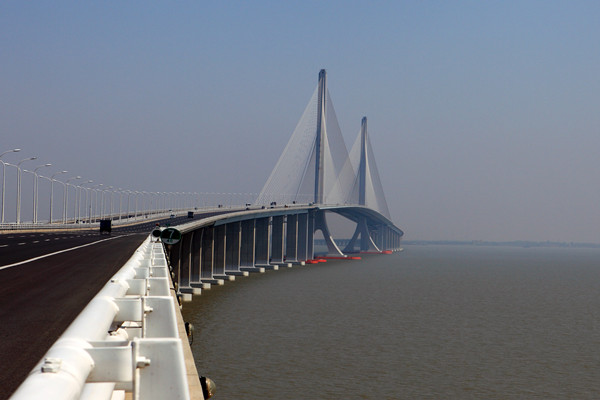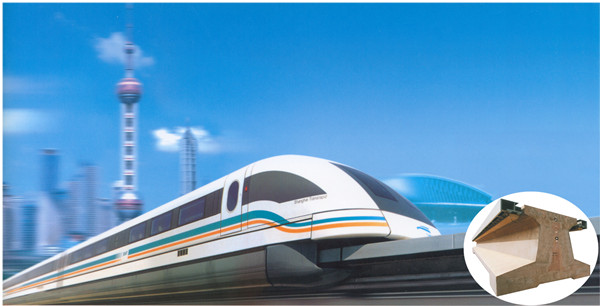China Railway Hi-Tech Industry Co., Ltd. (CRHIC), a subsidiary of China Railway Group Limited (CREC), has contributed to reform and opening-up of Pudong district in Shanghai ever since its establishment.
Going listed
CRHIC made its debut on the Shanghai Stock Exchange on March 2, 2017.
In the last three years, annual growth in the value of the company's newly signed contracts was more than 23 percent and the annual growth of the net profit attributable to owners of the parent company was over 20 percent.
The company currently has 53 legal entities and total assets worth 42.9 billion yuan ($6.52 billion).
It's worth mentioning that the company has been performing well in tunneling equipment, railway switches and steel bridge construction as well as railway and bridge engineering machinery.

A ceremony is held to announce CRHIC's listing. [Photo/sasac.gov.cn]
Songpu Bridge
Songpu Bridge, previously named Huangpu River Bridge, was the first of its kind to cross the river in Shanghai.
Located southeast of Songjiang district, the bridge has two layers. The bottom layer, which went into operation in September 1975, is for trains, and the upper layer, which opened to traffic in June 1976, is a highway.
Even today the bridge is the only highway-railway dual-use bridge over the Huangpu River.
China Railway Shanhaiguan Bridge Group Co., Ltd., a subsidiary of CRHIC, was responsible for production of the roughly 3,552-ton steel structure of the bridge and CRHIC's China Railway Baoji Bridge Group Co., Ltd. was in charge of the 2019 renovations to the structure which required about 4,300 additional tons of steel.

A view of the Songpu Bridge in Songjiang district, Shanghai [Photo/sasac.gov.cn]
Waibaidu Bridge
A bridge that has witnessed development of Shanghai for more than a century, Waibaidu Bridge was first built in August, 1873. In the early days, the bridge had a wooden structure; it was renovated into a steel truss bridge in 1907.
In 2008, the Shanghai Municipal Government required the rivets on the bridge to be replaced by new ones. China Railway Shanhaiguan Bridge Group Co., Ltd. contracted the renovation project as it was the only company that could undertake riveting work.
The company launched a maintenance team with 20 retired workers good at riveting and replaced more than 65,000 rivets within a year.
On April 11, 2009, the bridge was re-opened to traffic after re-painting and inspection.

A view of Waibaidu Bridge in Shanghai [Photo/sasac.gov.cn]
Shanghai Yangtze River Bridge
Located at the estuary of the Yangtze River, the Shanghai Yangtze River Bridge opened to traffic in October 2009.
With a 730-meter main span, the six-lane bridge is a cable-stayed cross-sea bridge with double towers and double cable planes.
It has two separated main beams, and the box girder and the cable tower were made of Q345qD and Q345qC steel.
China Railway Shanhaiguan Bridge Group Co., Ltd. was responsible for the steel truss manufacturing which weighed 36,000 tons.

Shanghai Yangtze River Bridge has two towers and two cable planes. [Photo/sasac.gov.cn]
World's first maglev demonstration line
The Shanghai maglev train demonstration line, which went into service in December 2002, was the fourth urban rail transport line in the city and the first in the world of its kind.
China Railway Baoji Bridge Group Co., Ltd. contracted manufacturing and processing of all functional parts of the project.
In addition to the maglev project, CRHIC had also participated in construction of several other subway lines in Shanghai.
One such project is Subway Line 18 which is now underway. China Railway Shanhaiguan Bridge Group Co., Ltd. is to provide more than 200 rail switches and a parking lot.
What's more, CRHIC has developed several pieces of subway engineering equipment to operate on the curved surface in the tunnel which were also used in construction of Subway Line 13, 18 and 15.
It's worth mentioning that Subway Line 17 obtained LEED Silver certification, which was the first subway station to gain the award in Asia. It was also a start of China's green rail transit construction.
The LEED certification, one of the most widely used green building rating systems in the world, is offered by the U.S. Green Building Council. The certifications include silver, gold, and platinum levels.

An image of the Shanghai maglev demonstration line [Photo/sasac.gov.cn]
(Executive editor: Wang Ruoting)